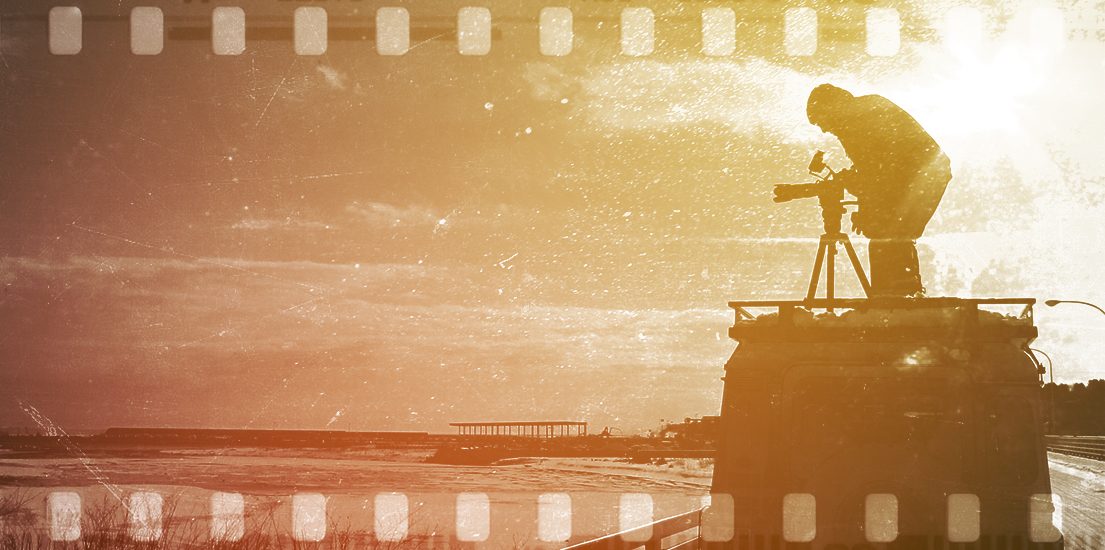Documentary films – ‘Koh-i-noor’ of Indian Cinema
The next time you’re browsing through the DVD store of your nearest supermarket just walk through the Indian films section. It is shocking to see the state of meager exposure that Indian documentaries get. Market forces have been cruel to them. While rom-coms occupy most part of the shelves, you might see a documentary or two here and there peeping for sunlight.
The other day I was speaking with one of my friends who loves Anurag Kashyap’s films. This friend of mine who is keen in films and hardly skips anything in the multiplex. To comment on Kashyap’s craft he said, “Wo documentary film jaisi banata hai (His films are like documentaries)”. This is precisely how we see our documentary films. It is this madness of -isms that has pushed reality on a backseat while realism is driving the whole scene. Which pedestal does a documentary film stand today in this country? Is it the scarcity of screening options or the lack of interest or our collective failure?
The scene is sad. Very sad! But there are a lot of people who are religiously at it. For them documentary is not about red carpets or trailer launches. They have made films that reach your hearts bypassing the box offices. Let us look at this very brighter side and talk about some of the better documentaries (Both old and the new lot) and the real caped crusaders behind them. I have tried to keep away from political documentaries. We still get to know about political documentaries when one of the theatres is broken or buses set alight by political goons. But films as these miss the commoners and reach only the ones who attend festivals or special screenings.
READ: A GUIDE TO DOCUMENTARY MAKING
Shores of Silence – Mike Pandey
This man is our very own Discovery channel. He has filmed nature like no one else in this country. The three-time winner of the Green Oscar, Mike Pandey’s films have made a difference that is pretty much tangible. When his film Shores of Silence came out, it set the tone for the kind of awesomeness that we were to witness in his coming films. The film is around the poaching of whale sharks for their fins and liver. It was this film that forced the government of India into bringing in a legislation and banning the killing of whale sharks on Indian shores. The whale shark was declared protected under the Indian Wildlife Act – 1972, bringing it at par with tigers and rhinos. Cinema for change, quite literally!!
A shortened version of the film can be watched on YouTube.
P.S- Another very interesting film to watch on the same YouTube channel is The Last Migration which is about a family of wild elephants being relocated from the forests of Madhya Pradesh.
My Camera and Tsunami – R.V.Ramani
“I filmed the Tsunami when it came. It was difficult to film it. You know, you don’t know where to compose”
– Ramani in his film
The Tsunami came like a demon and swiped away everything that came in its way. Ramani was also swiped but not alone. He was in the company of his camera. The camera, that he claims, became an extension of his body and helped him cope with the situation. Luckily he survived without any major injury. The film is around that camera and data backup.
It is an experiential film and has been edited beautifully. This is a film where the camera became the savior as the sensation of holding a camera made Ramani realize that he was still alive. There is no shot of the Tsunami as such but you can still feel it. It was the good old days of DVCAM and the camera could not be saved. If it was one of the Go Pro’s that we have today or any other camera that can go underwater, the film would have been very different. This beautiful film without any ‘Tsunami shot’ would have changed forever.
The grammar of docu-filming is changing very fast. The format of an-interview-every-two-minute gets really boring. The modus operandi of this film is also something to look for. PSBT has produced the film and has uploaded it on YouTube. So go ahead and watch it!
Children of the Pyre – Rajesh Jhala
“I am Ravi Choudhary. I am fifteen years old. I have cremated over a thousand bodies. When few bodies arrive, I feel sad because I lose my earnings. I pray that all the oldies die and are brought here.”
-A haunting voice in the film
Manikarnika in Varanasi gets over 150 bodies to be cremated every single day. There are all sorts of myths, legends and real stories surrounding the area. In the midst of it all are seven children being raised around the profession of lighting pyres. They are treated as untouchables owing to the nature of their profession. It is their struggle for bread and butter that keeps them going. This isn’t a fictional account of rags to riches but a story of rags to rags breathing in flesh and blood.
The trailer of the film is available on YouTube and a Facebook page of the film shares updates about its upcoming screenings.
READ: I GOT THREAT CALLS & HATE MAILS FOR MY FIRST DOCUMENTARY FILM
Amdavad Ma Famous – Hardik Mehta
This National award-winning film is our very own Kite Runner. It’s set in the Astodia area of Ahmedabad. The film captures Uttarayan and the grandeur of kite flying during the festival. Our protagonist is Zaid, a kid who’s the expert kite-catcher. The film captures the conflict of this poor child who’s fighting for a space to fly his kite. Arguments between children and adults have been beautifully captured in this film. Apparently, Zaid’s dad was also a star kite-catcher of his time. The film isn’t available for viewing but the director says that in a couple of months it will be online. There is a teaser to the film that’s from the days when it was a work-in-progress.
Some of the other mind blowing films are Abhay Kumar’s Placebo which is a hybrid documentary set around eight youngsters who suffer from delusion and insomnia and are quarantined. Inshallah Football is a story of an 18-year-old Kashmiri footballer Basharat who has a dream to play in Brazil. But the Indian Government refuses to give him his passport as his father was allegedly involved in militancy. Celluloid Man by Shivendra Singh Dungarpur gives us an insight into the life of P.K.Nair, the man who is the backbone of archiving films at the National Film Archive of India, Pune. Jai Bhim Comrade (Only hardcore political film entry in my recommendations), Gulabi Gang, India’s Daughter and Sikkim by Satyajit Ray are other favourites. Frankly speaking, the list can go on and on.
READ: OVERCOMING CHALLENGES WHILE MAKING DOCUMENTARIES IN INDIA
We as a country have been doing some remarkable work in the documentary film circuit. But will this only be recognized internationally? Isn’t there a need for Indian mainstream studios and big banners to step in and facilitate a proper releases for docus? Let us stop treating docus as bonsai siblings and give them their due importance.
To sum up I would like to refer to the earlier conversation with my friend. After his dissection of Anurag Kashyap’s method of filming, I asked him, “Tere hisaab se acchi documentary film kaunsi hai?” (What according to you is a good documentary film?)” he promptly replied,”Jo parliament mein halla kar de!!!!” (That which can create a ruckus in the parliament!!!!). What followed was me giving him my hard drive which had the folder, “DOWNLOADED DOCUS!!”.
Disclaimer: The opinions expressed within this POV/BLOG are the personal opinions of the author. PANDOLIN is not responsible for the accuracy, completeness, suitability, or validity of any information on this blog. All information is provided on an as-is basis. The information, facts or opinions appearing on the POV/BLOG do not reflect the views of PANDOLIN and PANDOLIN does not assume any responsibility or liability for the same.



